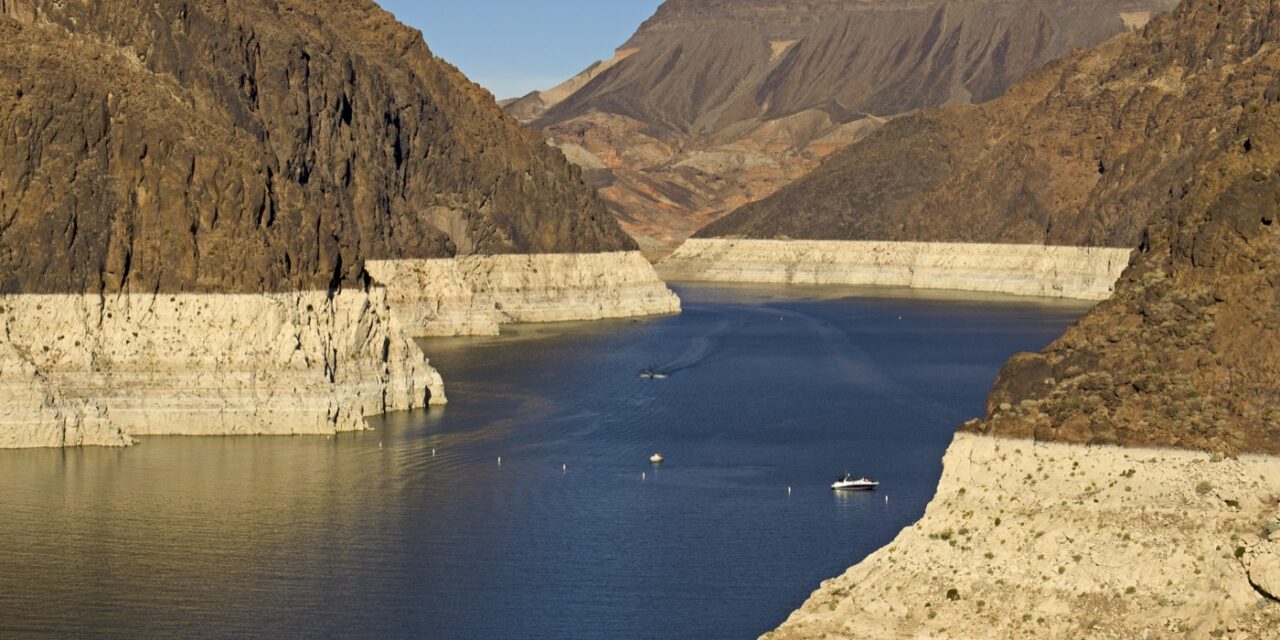It’s a one-two punch. Just as a bipartisan group of Western governors has urged the federal government to declare a drought disaster declaration, a tier one water shortage has been declared for the Colorado River by the Bureau of Reclamation.
Only last week Ark valley Voice published a story on the water call made on three water reservoirs across three states including Colorado. All three feed the Colorado River Basin, which supplies Lake Powell and its hydroelectric dams.

The Colorado River Basin. Image courtesy of Mission 2012: Clean Water
A tier one shortage, the first-ever declared shortage on the river, will mean that cutbacks will be made, starting next year, in the amount of water sent to the states of Nevada and Arizona from the Colorado River water, as well as the share that goes to Mexico. Water experts say that action should have been taken much sooner to conserve supply, and steps can still be taken.
This same week, Colorado Governor Jared Polis and Western governors sent a bipartisan letter to the Biden administration urging the President to declare a FEMA drought disaster in order for western states to receive additional federal resources.
Drought conditions across Colorado, Utah, Oregon, and Idaho have reached historic levels, with 99 percent of the West in a declared drought compared to only 63 percent last year. These conditions have forced farmers across the West to make difficult decisions, including forcing farmers to sell their livestock or consider selling their land for development.
In these first cutbacks, the impacts are expected to fall heaviest on Arizona agriculture, which will see its water usage cut back 20 percent or more, drying up hundreds of thousands of acres of agricultural production land. California will see no cutbacks, as it holds much more senior water rights to the Colorado River than does Arizona.
The drought conditions have become so serious that even last year’s average snowpack in the Rocky Mountains that feeds the Colorado River did not meet its normal delivery. The river basin that would normally maintain the flow of the Colorado river is soaking up the moisture like a sponge.

States that divide the flow of the Colorado River. Image courtesy of Mission 20212 Clean Water.
Many environmental advocates now say that the Colorado River is severely threatened by human overuse, environmental issues, and poor river management technique. The Colorado Basin is considered an extremely over-apportioned water resource and the water quality of the river is jeopardized by agricultural overdraw, which increases the salinity of the river.
As climate change, shifting monsoon patterns, and prolonged drought continue across the west, Polis visited Elk Head Reservoir State Park near Craig on the state’s drought tour. He announced that the Colorado River District is partnering with the Colorado Water Conservation Board to help farmers by releasing 677 acre-feet of water from Elkhead Reservoir to local farmers free of charge.
“At this point there is little to no animal feed across much of the West, requiring farmers to import feed from out of state. Without substantial assistance, rural economies in our states that rely heavily on agriculture and natural resources will take years to recover from the effects of this devastating drought,” the governors’ letter to President Biden says.
“We are eager to have additional conversations with you and your Administration about longer term strategies to make the West more resilient to drought, wildfires, and climate change. However, at this time we are requesting that you immediately declare a FEMA drought disaster in our states, allowing our agriculture communities to access funding beyond what is available through existing emergency programs,” the letter reads.
By declaring a FEMA drought disaster, Colorado, Utah, Oregon, and Idaho will be able to access federal resources beyond what is currently available through existing emergency programs. The Western Governors also requested that the Biden-Harris administration collaborates with the Secretaries of Agriculture and Interior for additional livestock feed opportunities.
It should be noted, as documented in the recently-released 2020 census numbers, that Colorado’s population is increasing rapidly. It grew by 14.8 percent in the past ten years, most of it in the Front Range metropolitan area. The state’s population is projected to double from 5.4 million to more than 10 million people by 2050. Our water resources are shrinking, and predictions are that they will continue to decrease due to the effects of climate change, which include more droughts and hotter temperatures.
This first-ever tier one water shortage is an indication of the canary in the coalmine warnings that have been sounded for years. What lies ahead may not be pretty — and it may well pit Colorado’s agricultural heritage and its much-vaunted recreational assets against metro population growth and usage.
Featured image: The Colorado River supplies the fast-shrinking Lake Mead. Image courtesy of Science Friday.
For students and those interested in learning more about the Colorado River Compact, this is a good starting point: https://en.wikipedia.org/wiki/Colorado_River_Compact









Recent Comments